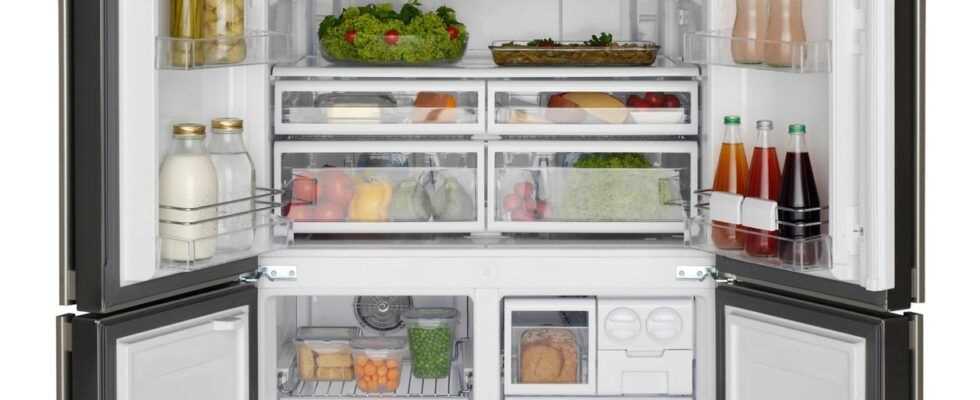Yes, wheat flour keeps best in the refrigerator, and no, basil doesn't. Here are 10 conservation mistakes that we make all the time and that we should stop as soon as possible!
Do you keep your milk in the fridge door and place your fresh produce in the vegetable drawer? These little mistakes may seem harmless, but they will have a big impact on the taste and preservation of your food. According to a study conducted by the France Nature Environnement association in 2013, a French person throws away an average of 79 kg of food per year. And often, it's because he doesn't know how to store his food well! To avoid waste, we take stock of the storage mistakes we make most frequently.
1. Milk in the fridge door
The compartment for bottles in the fridge door is super practical but not great for storing milk! In fact, as soon as the fridge is opened, the milk undergoes a sudden rise in temperature which affects its quality and storage. If you don't consume it within two days, place it on a shelf well at the back to keep it cold.
2. Tomatoes in the fridge
When placed in the fridge, tomatoes lose their flavor and quickly become soft. A PNAS study explains that the refrigerator blocks the genes responsible for the manufacture of aromatic compounds in tomatic. The cold also beats the cell walls of the tomato, often making it bland and mealy. The best is therefore to keep it in the open air!
3. Cucumber in the fridge
Like tomatoes, cucumbers are one of those foods that we usually keep in the refrigerator when we shouldn't! In contact with the cold, the skin of the cucumber wilts very quickly, but that's not all, it also loses its taste. If it is not broken, you can store it in the open air without any problem. If it is already cut, protect it with cling film.
4. The avocado always in the fridge
Since we know that very ripe avocados keep best in the fridge, we tend to put them all in the fridge. But avocados that have not yet ripened will stay tough and will not ripen due to the cold. If you love avocados, you know they only taste delicious when they're fully ripe! So wait a bit before putting them in the fridge.
5. Apples alongside other fresh produce
You may already know that bananas should not be placed near other fruits and vegetables because they produce ethylene, a gas that causes other produce to ripen faster. It's the same for apples, so they should be stored separately and preferably in an airtight package.
6. Nuts in the cupboard
If you're used to putting your shelled nuts in your closet, stop! After a month placed there, they deteriorate. To keep them fresh, store them in an airtight jar and do not hesitate to put them in the refrigerator.
7. Garlic and onion in the fridge
If you regularly consume garlic and onions, do not put them in the fridge! Store them in a dry cupboard as the humidity in the fridge causes them to soften. In addition to losing their flavor, they also mold more quickly.
8. Wheat flour in the cupboard
No, flours are not invincible to heat, air or light! Generally, it is recommended that you store them in a cool, dry place protected from light. Well be aware that if they are placed in the refrigerator, it will double their storage time!
9. Aromatic herbs in the fridge
Free up space in your fridge by placing your herbs, including basil and thyme, in a glass of water outside the fridge, as you would a small bunch of flowers. It's pretty, it perfumes your kitchen but above all, it helps to preserve them well!
10. Bulk root vegetables
Turnips, fennel, sweet potatoes … Root vegetables should not be stored in the refrigerator, but rather in a cool, dark and dry place. Place them separately in cotton bags to retain moisture, otherwise they will lose their taste very quickly.
